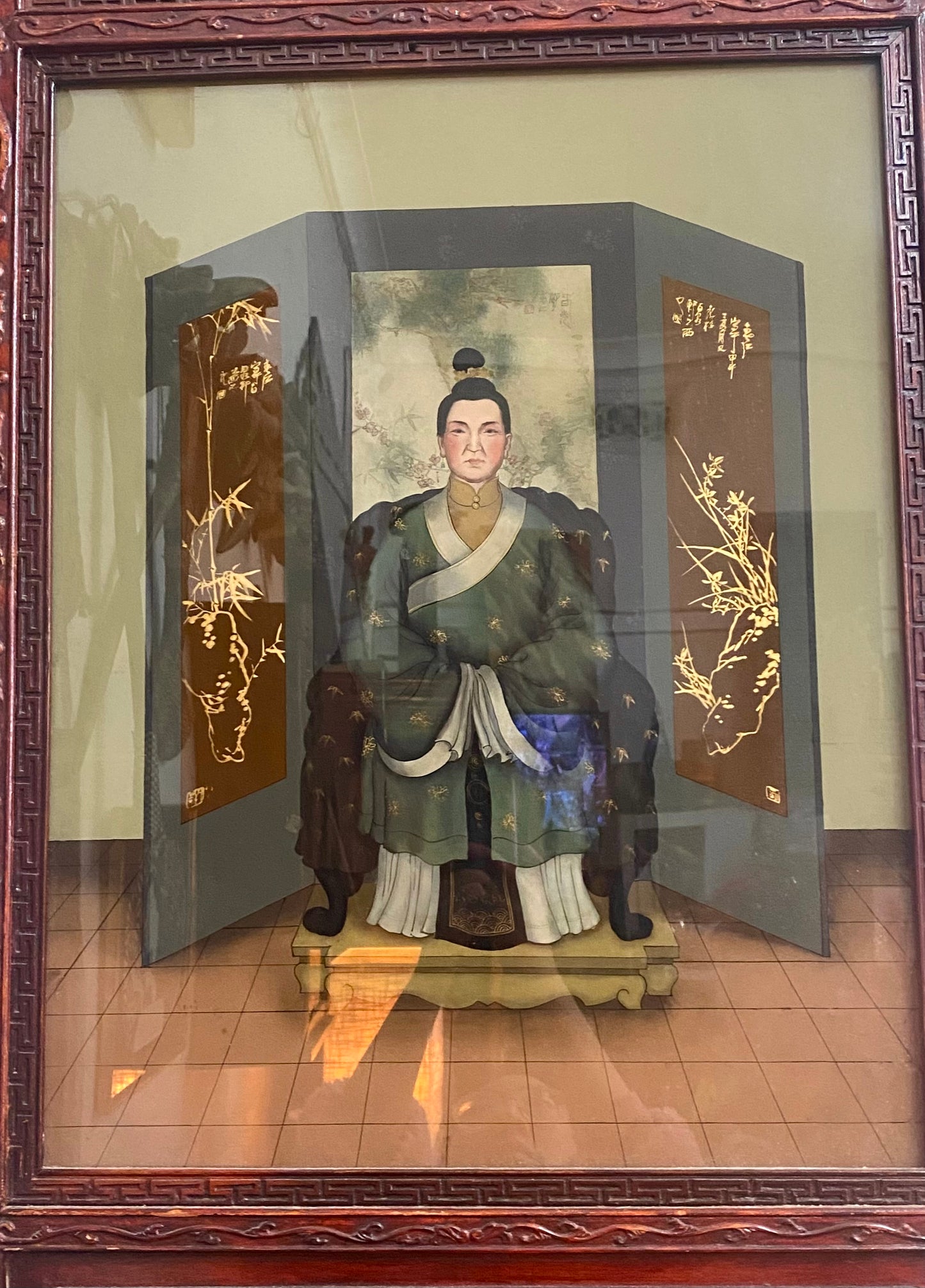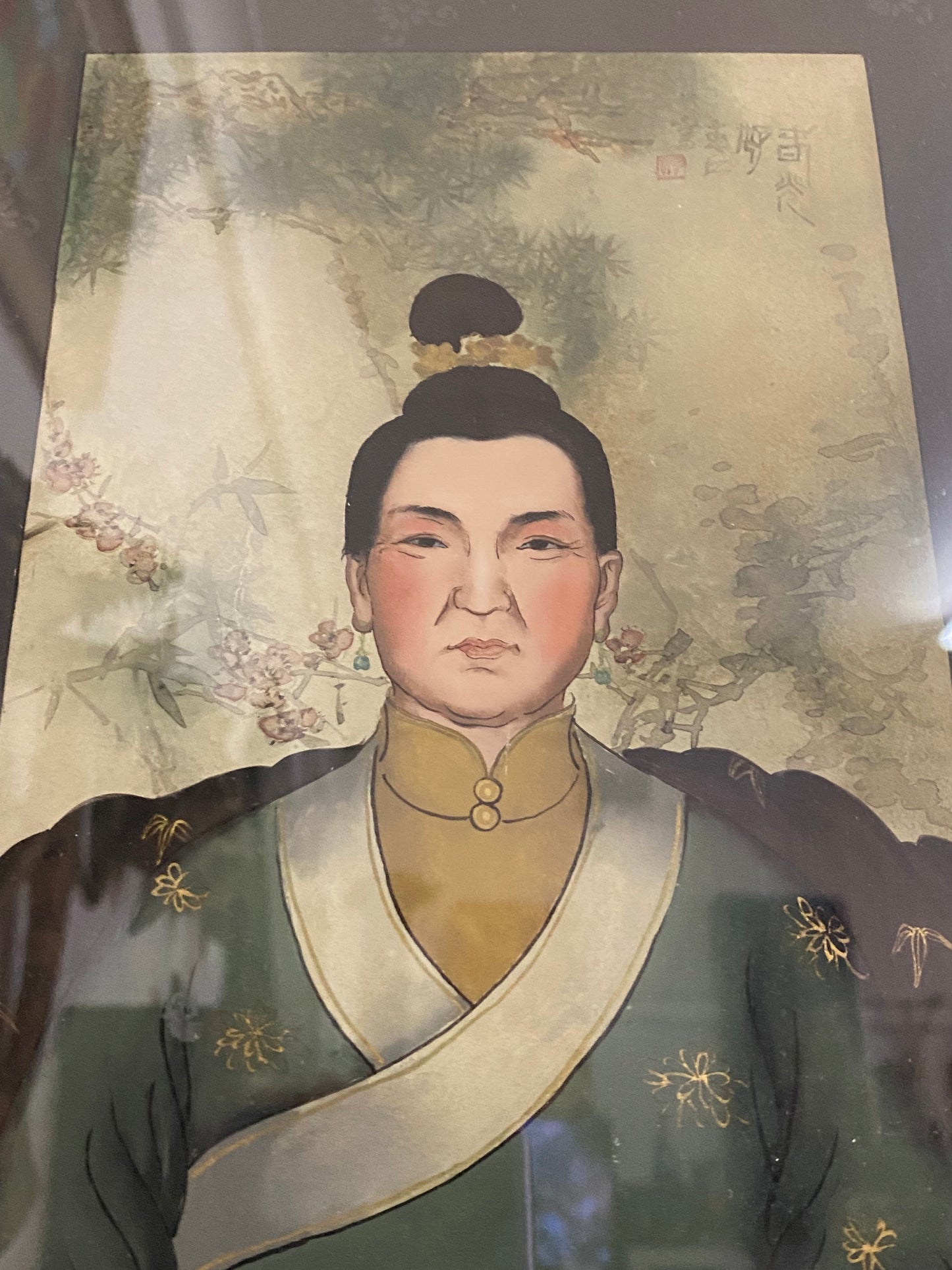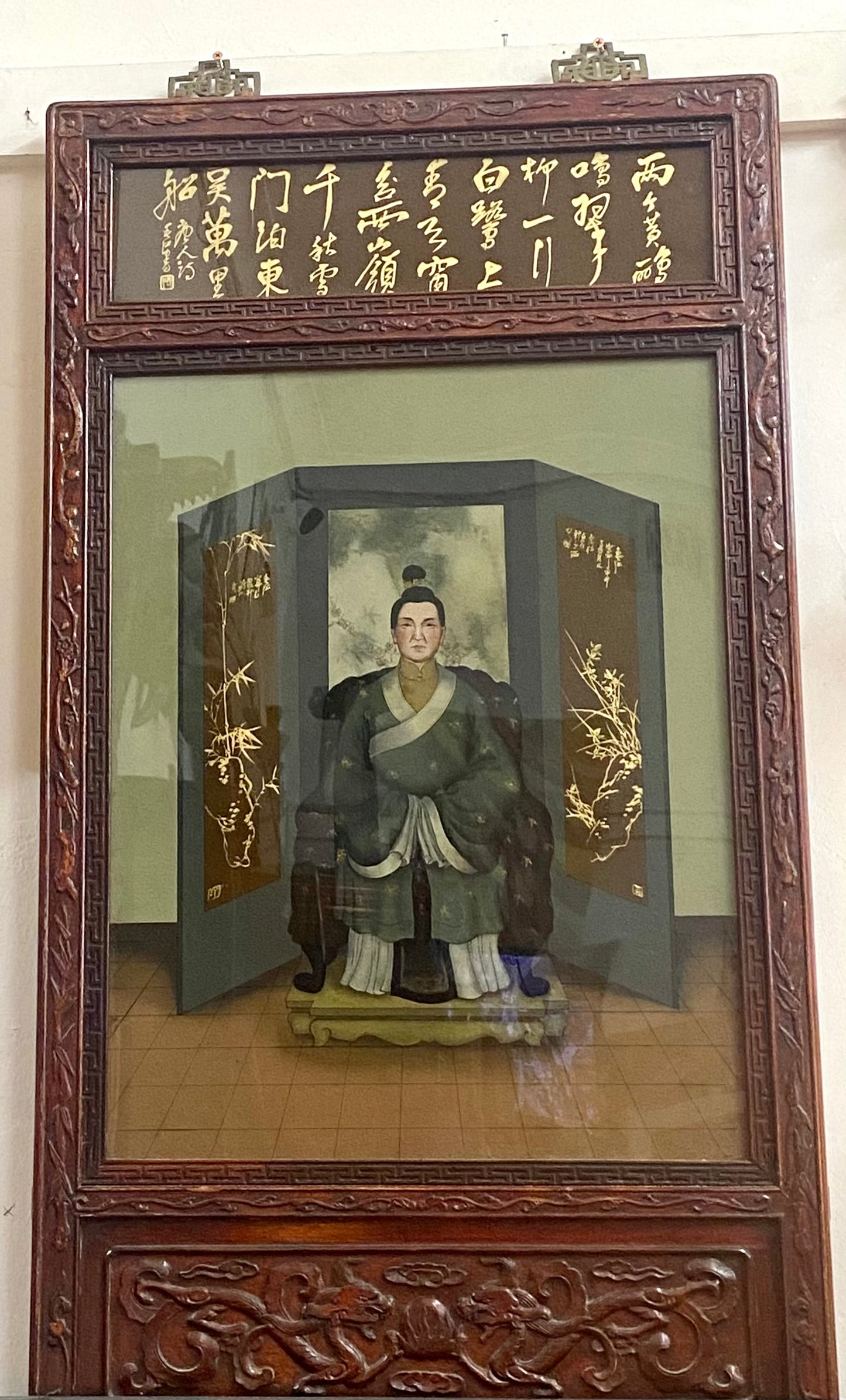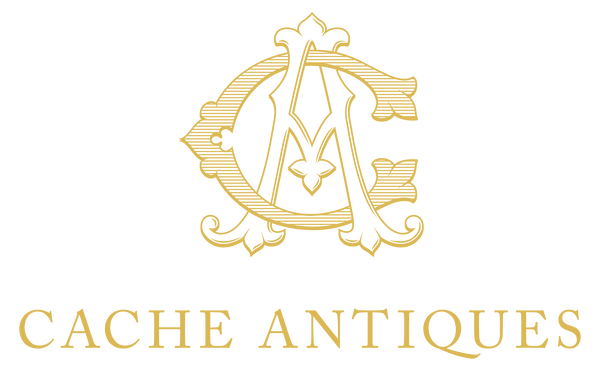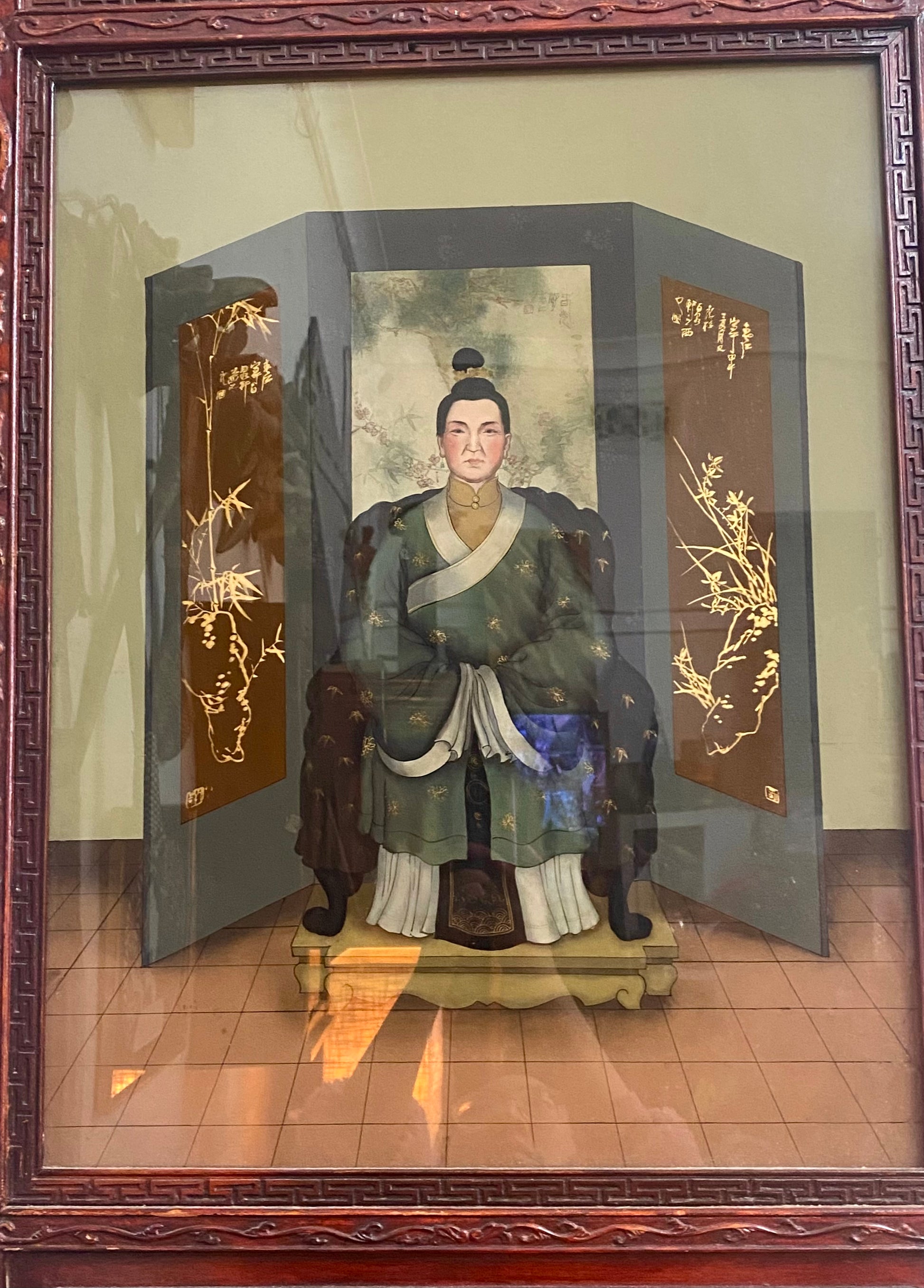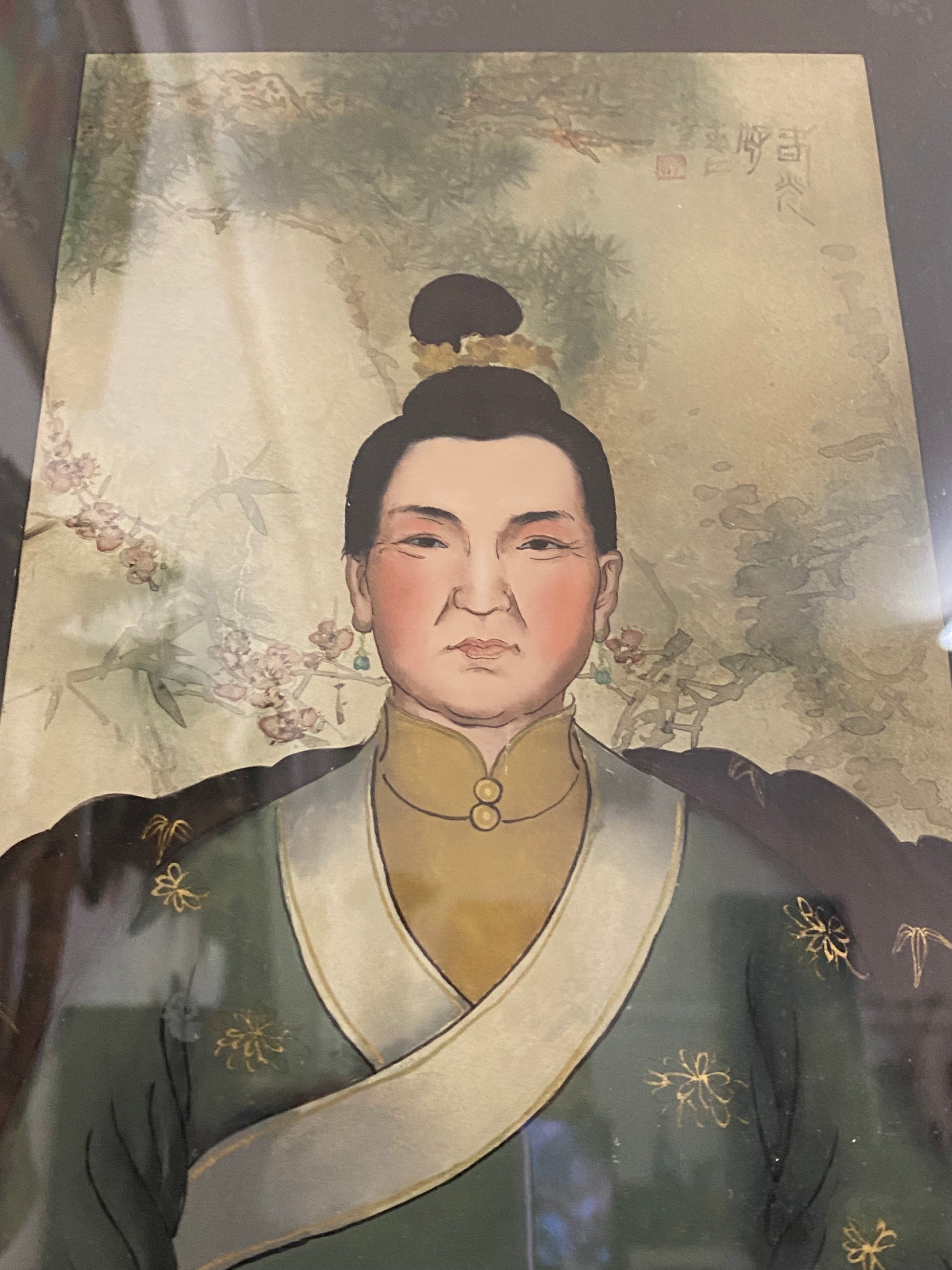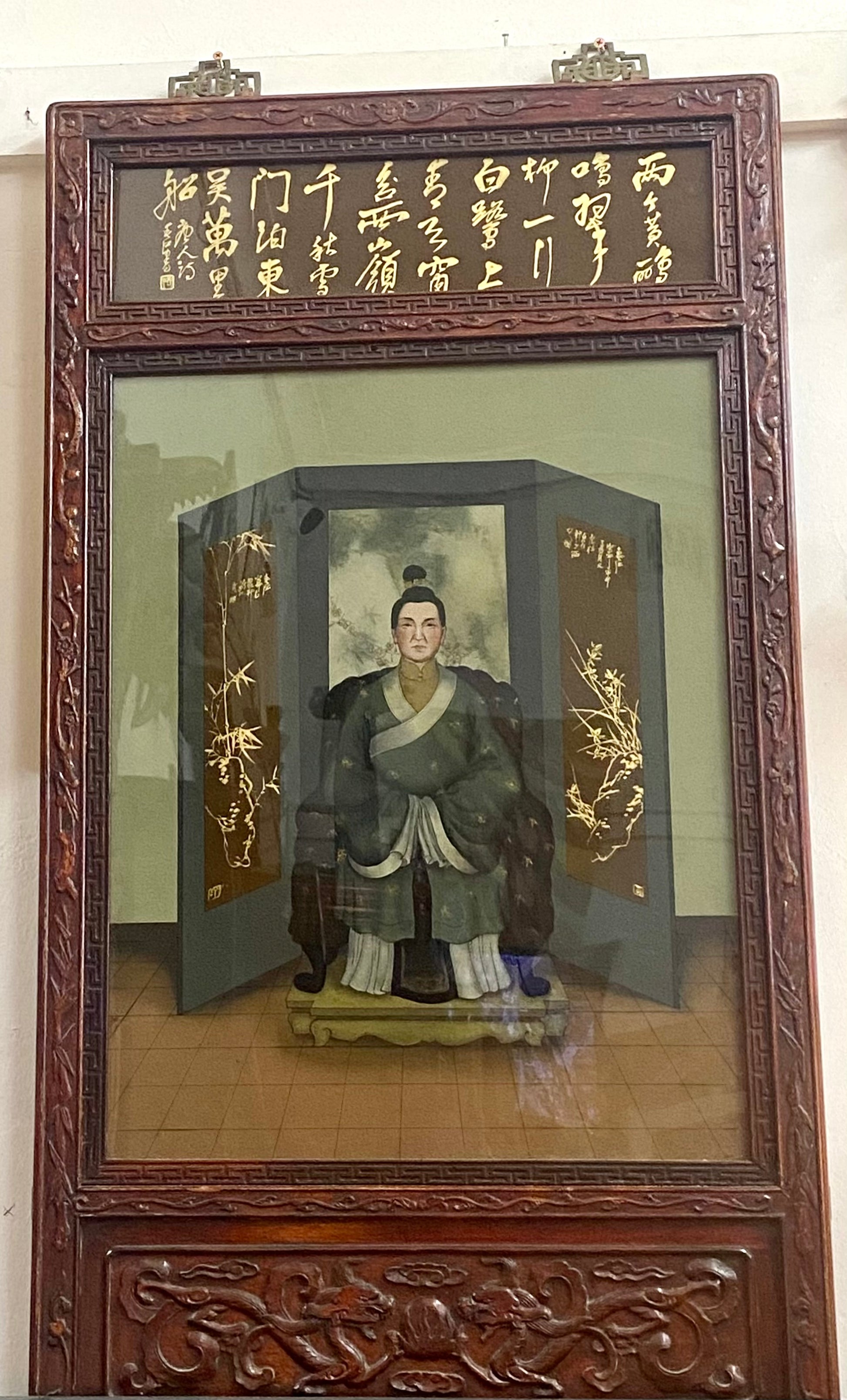cacheantiquessydney
Rare Antique / Near Antique Late Qing to Early Republic Reverse Painted Ancestor Portrait on Timber Panel
Rare Antique / Near Antique Late Qing to Early Republic Reverse Painted Ancestor Portrait on Timber Panel
Couldn't load pickup availability
Due to the delicate nature of this painting, please contact us if shipping is required for a custom quote.
This is a fascinating and particularly rare antique reverse-painted Chinese ancestor portrait.
With ancestor portraits, contextual clues are important. Who was this person, and what was their relation to the person commissioning the photo? What might the background have been of this family?
This antique or near antique ancestor portrait frame is clearly in the style of the Qing period, and was likely painted towards the end of the Qing period up to the early-mid stages of the Chinese Republic Period, placing this approximately from the 1900s to 1930s. The frame is clearly of excellent quality, with a poetic inscription in calligraphy on the top glass panel.
The subject is a middle-aged to older woman, likely the family matriarch. Grandmothers ruled their families with an iron fist, and the the painter depicted this woman accordingly; her hairstyle is simple and her garments are relatively sober, which indicate her senior/elder status in the family (wives or concubines of the subject were usually depicted in red and pink respectively). However, her hair ornament is silver and her earrings are jade, which speak to her status within the family. Her feet are concealed beneath her robes, typical when depicting most women of high status. The outfit details suggest a Han Chinese background, while the background screens and calligraphy hint at the family’s literati background, as does the sober blue colour of her overcoat
Usually, the official and literati classes show the entire body. The emphasis is on the upper body, and generally much care is taken to depict the facial features.
Ancestor portraits were traditionally highly venerated and examples only entered the market upon the Opium Wars and subsequent Western intrusion. These timber-panelled, reverse-painted examples are particularly collectible as at that point in time, multiple factors led to it becoming an increasingly rarefied art form, meaning that there are extremely few 20th century timber-panelled examples on the market. The poetic inscription on it makes this particularly distinctive; the inscription is one of Du Fu’s great jue ju poems, which is known in English as “Two Golden Orioles Sing in the Green Willows”. Du Fu, who is known as the Poet Sage in Chinese literature and culture, is known for his talent, his breadth of style, his compassion for the common people and patriotism for his country.
This is a collector’s piece and will only increase in value as interest in Chinese art continues to rise.
Price is marked at $2400 AUD.
Panel Measurements: Approx 100cm high, 54.5cm across, 5.4cm depth.
Excellent antique/near-antique condition with some wear to paneling commensurate with age. No major wear to painting or inscription.
Shipping & Returns
Shipping & Returns
